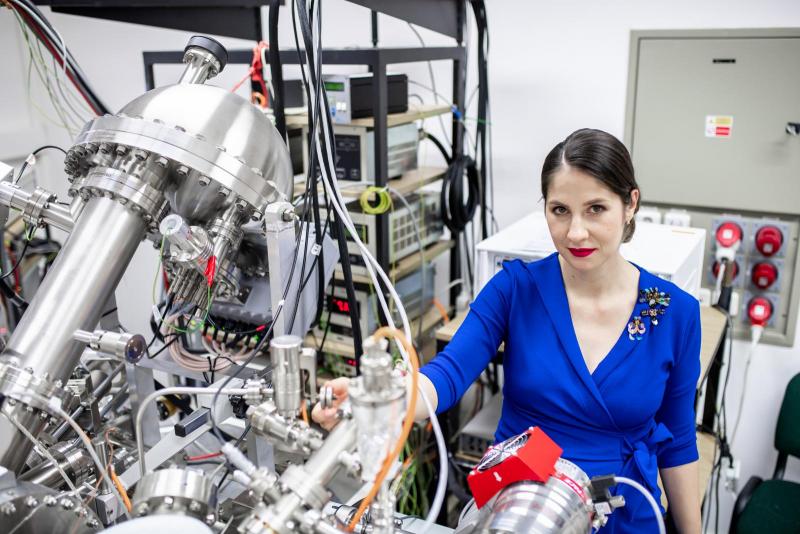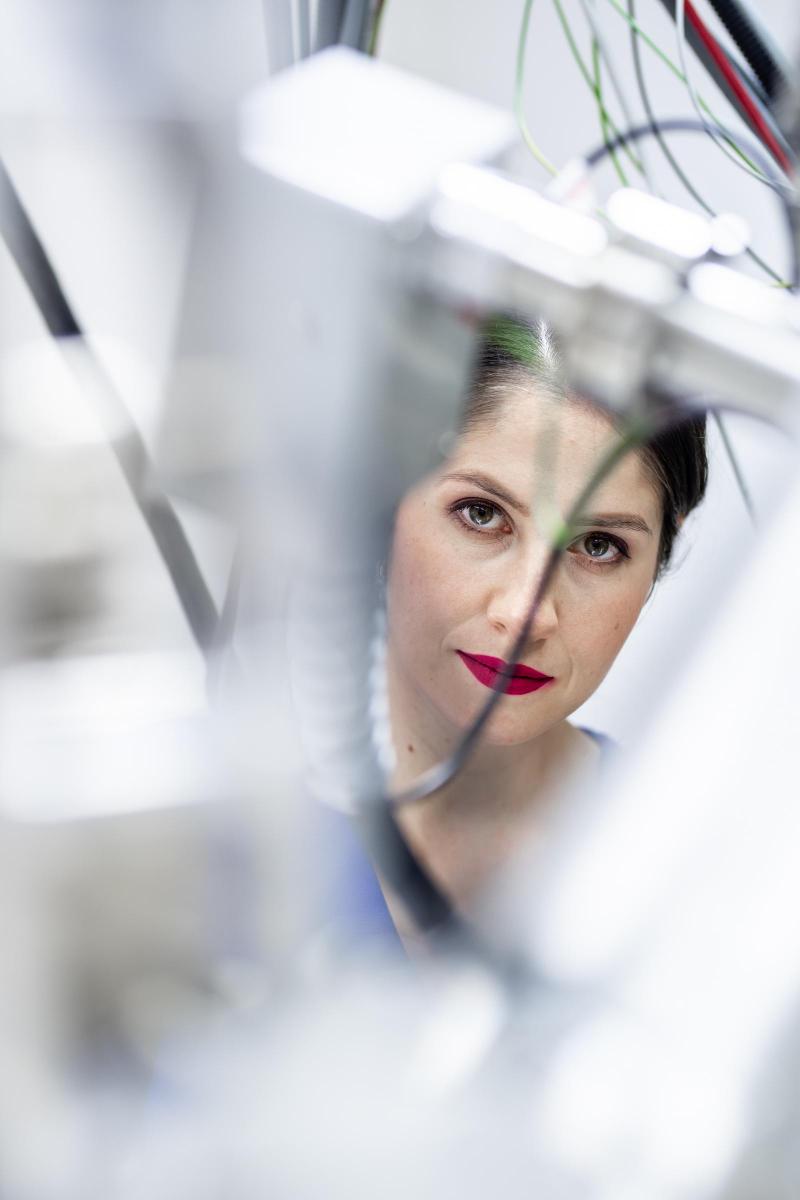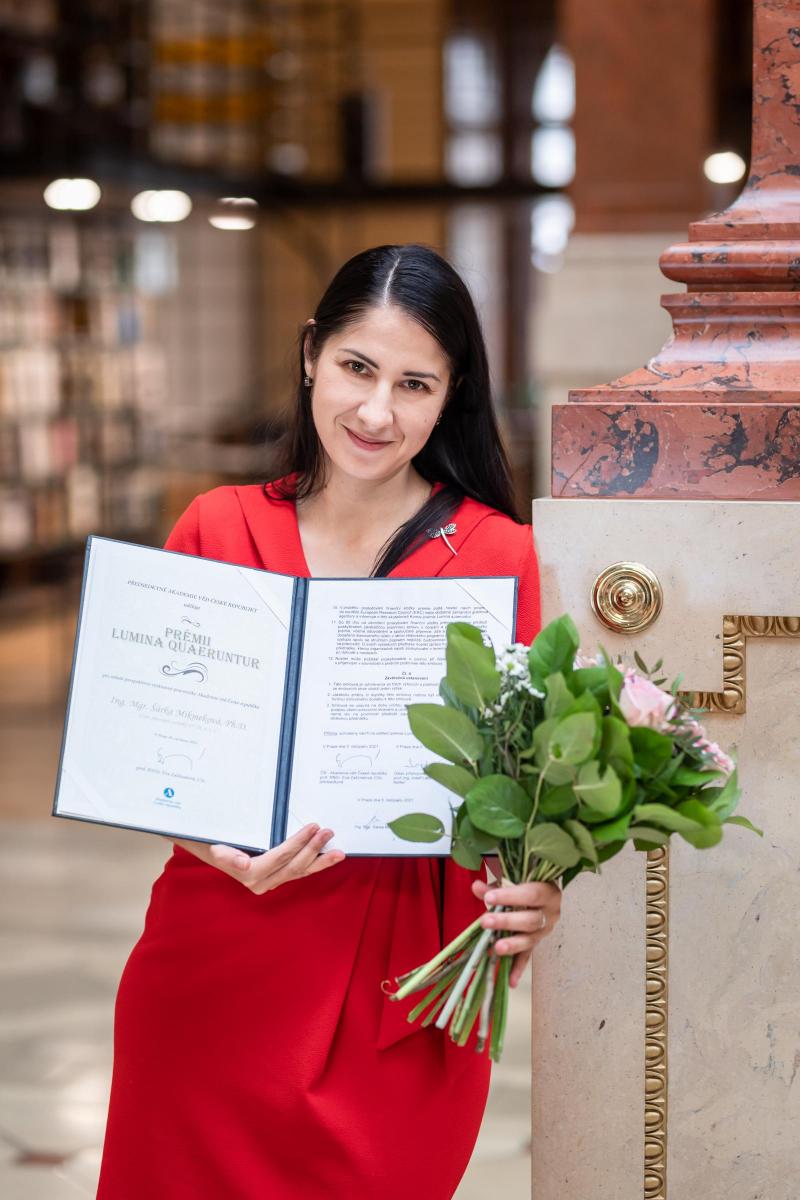People
I don't call the students by name, I respect them very much, says Šárka Mikmeková

Šárka Mikmeková, a graduate of the Faculty of Mechanical Engineering, is not an iron, but a “steel lady”. For the native of Třinec, steelmaking seems to have been predestined: she has five years of experience in one of the largest steel companies in the world and she can talk about steel poetically. Today, she and her team at the Institute of Scientific Instruments of the Academy of Sciences are developing new methods for steel classification. And it is no coincidence that her research group is made up of FME (Faculty of Mechanical Engineering) graduates.
You come from Třinec, so focusing on steel research was an obvious choice from the beginning?
We are born as steelworkers! The truth is that I have a great affection for steel, steel has been the lifeblood of my family. But our region is not just ironworks, it is a region with beautiful hills, we have a specific culture,... I have always been drawn to technology, I was good at mathematics and physics, but the humanities were not my cup of coffee.
But you first studied at Masaryk University in Brno, didn't you?
My parents wanted me to go to the dentist, but I hate blood. Nevertheless, I applied for both dentistry and physics at the Faculty of Science at MU. So I started studying astrophysics, but I soon realised that although it was romantic, it would be hard to find a job. I decided to keep astrophysics as a hobby and applied to the Faculty of Mechanical Engineering at the BUT.

How did you get into materials research?
I was interested in this subject during my undergraduate studies, and then I chose materials engineering for my master's degree. The materials complement nicely with solid state physics, which I was studying at Masaryk University at the time. Since my undergraduate studies I worked at the Institute of Scientific Instruments, where I stayed afterwards.
It has already been mentioned that you are focusing on steel research. What fascinates you about it?
We often talk about nanomaterials and modern composites, but almost everything is made of steel: cars, structural elements of buildings, you can find steel everywhere. In addition, steels today are very advanced and modern materials with a cutting-edge nanostructure. I am fascinated by their practicality and variability of use. Unfortunately, for some reason, steel doesn't sound as attractive as, say, nanomaterials.
Japan has played a big role in your scientific career, and you have returned there repeatedly and spent many years there. How did you get there?
Originally, I went on an internship to Toyama University in Japan during my doctoral study. I'd never heard of it, but it sounded interesting, the researchers there are into electron microscopy and aluminium and magnesium alloys. This six-month internship was my first experience with Japan.
Were you expecting a big cultural shock?
I was the only foreigner at the school. It is important to remember that Toyama is not Kyoto or Tokyo, it is a huge city, but you hardly come across any foreigners there. I felt stupid that no one was talking to me, so I started to learn Japanese, and they paid for a private tutor. After a six-month internship, I returned to the Czech Republic, but then I went to Japan repeatedly. Just before finishing my doctorate, I was offered an internship at JFE Steel. I went there several times for shorter internships, and after finishing my doctorate I was offered my first ever postdoc position, which they had never had before. I thought I'd give it a try and stayed for five years, later as an employee.
"Our goal is to develop an objective technique for classifying the structure of steels. Currently, classification is purely subjective and dependent on the person; there is no method that is objective and repeatable so that results can be compared with each other."
Did you manage to fit in with the team?
I was the only foreigner and the only woman there. I'm a pretty quiet and practical type, I don't have sharp elbows, and I think that suits them. It helped a lot that I was already familiar with the language and culture. Nobody cared that I was a woman, it was enough that I was a foreigner. The Japanese are quite fond of foreigners, but you never quite fit in, you'll always be a foreigner.

What good things did you take away from Japanese culture?
Like belonging. At the beginning I was really annoyed with the uniforms and the daily warm-ups, but later on it was nice to be part of the team, they were like my family. When I was sick, my colleagues visited me and cooked for me, that was common. Or when a colleague died, we put money down and paid for the funeral, or gave some money to his wife so she wouldn't be in need. People stick together, they are not competitive, sharp elbows are not worn. Modesty and respect are appreciated. Although sometimes politeness can be acted out, because the Japanese are very formal, no one will put you in an awkward situation. Even the language is built that way, Japanese doesn't really know how to say no. If someone asks you if you're going to the movies tonight, you can't say no, because Japanese doesn't have that term, there are only descriptions. You can't rough anyone up, your tongue won't let you.
Are you continuing the research in Brno that you started in Japan?
Building on this, I am still developing new techniques for imaging the structure of steels, but we have now enlisted the help of artificial intelligence, specifically deep learning methods. Our goal is to develop an objective technique for classifying the structure of steels. Currently, classification is purely subjective: one has to prepare a sample, for example, by etching it and then looking at it, but this is subjective and depends a lot on the experience of the metallographer. There is no method that is objective and repeatable so that the results can be compared with each other. We want to develop a technique that would allow objective classification.
How do you want to achieve this?
First of all, the sample would not be prepared by a human, but by a robot, so we are also dedicated to robotics and automation of the whole process. At the same time, we are working on software to objectively evaluate the sample using artificial intelligence. So you wouldn't need a qualified person to prepare the sample or evaluate the structure, but you would have an objective result that could be compared to any other.
You have your own research group at the Institute. How big is the development team?
There are four other colleagues in my team besides me, and we also work with my sister's team – I have a twin sister, Eliška, who also leads her own team at the Institute. So there are eight of us in total. We need to be multidisciplinary, with metallography, electron microscopy, robotics and artificial intelligence methods represented.
You also have graduates of the Faculty of Mechanical Engineering in your team, right?
Everyone in my group is my student and I brag about them whenever I can. They are independent, hardworking and polite. I try to treat my students with respect and reverence; for example, I would never dare to call them by name because I have the utmost respect for them. I try to involve them in everything, even in writing new projects, drawing on the fact that they are young and see the issues differently than I do. All four are from the Faculty of Mechanical Engineering, someone from materials, physics, automation or mechatronics. In the team, we are actually all from different places, which is great because we enrich each other.
(ivu)
Optical fibres will help peek into the deepest parts of the brain. A doctoral student from FME is involved in the research
Petr Viewegh’s Microcosm and Macrocosm
A quarter of a century on the road to the Sun
Smart dispatching system for virtual power plants co-developed by experts from FME BUT
Unlocking the Mysteries of the Sun: An Interview with Prof. Shadia Habbal